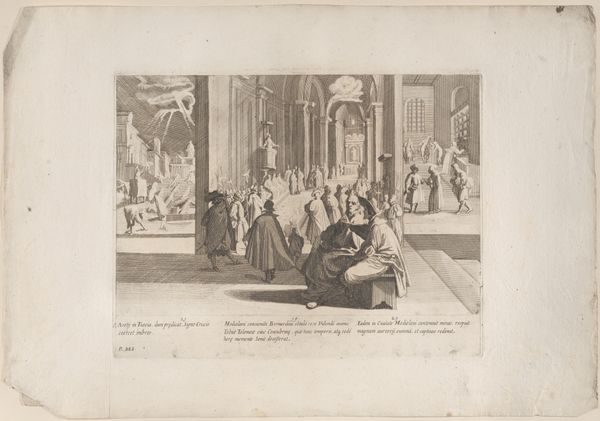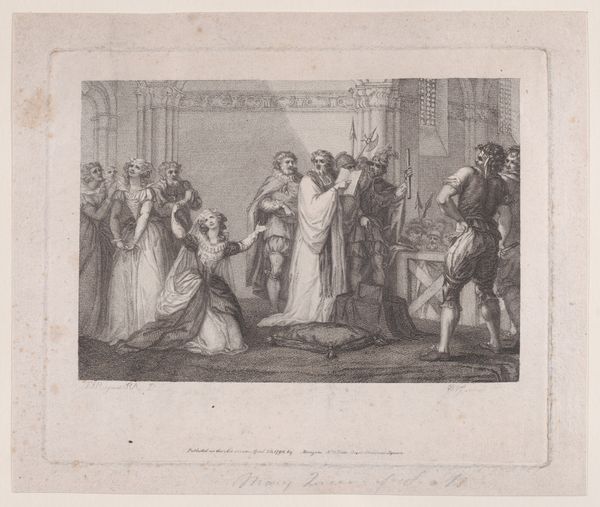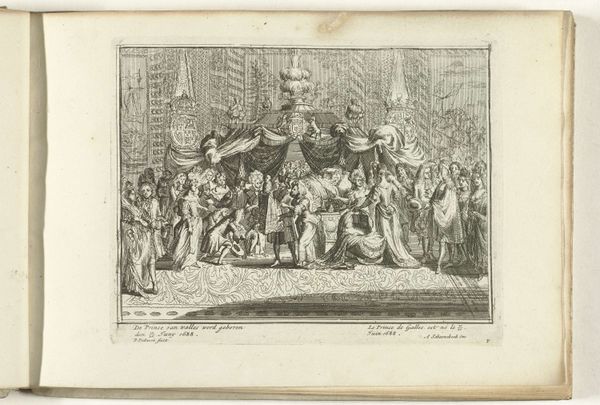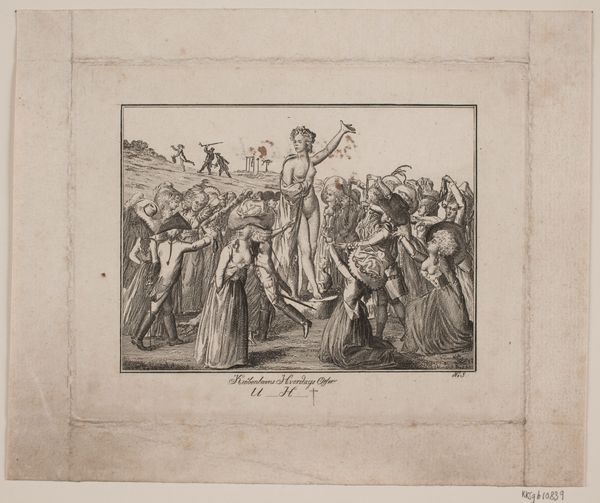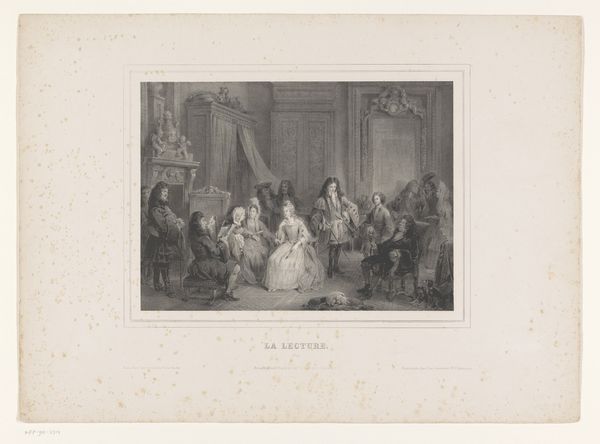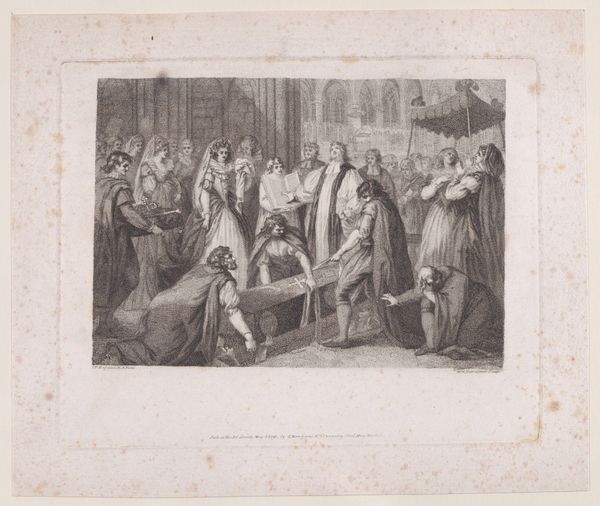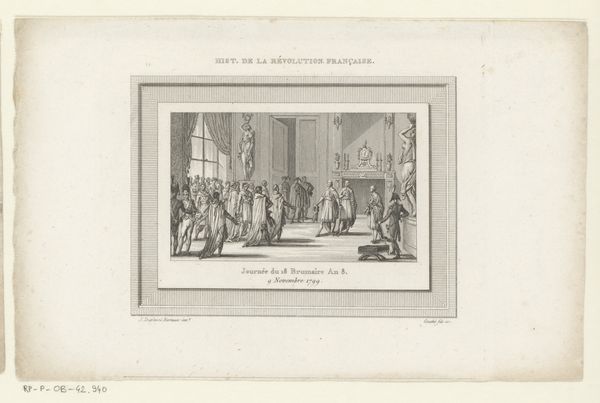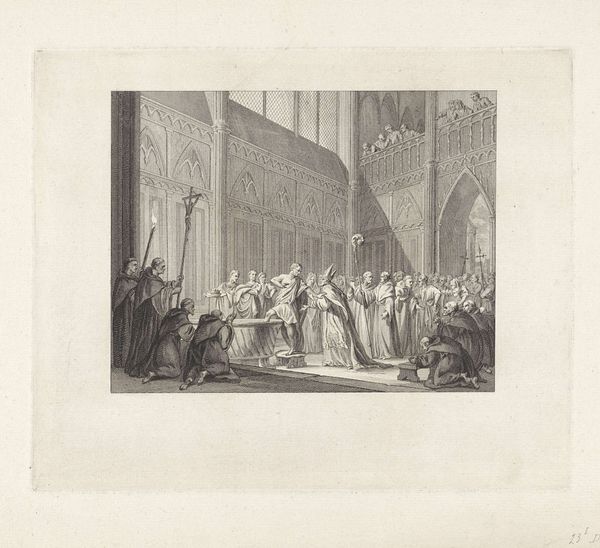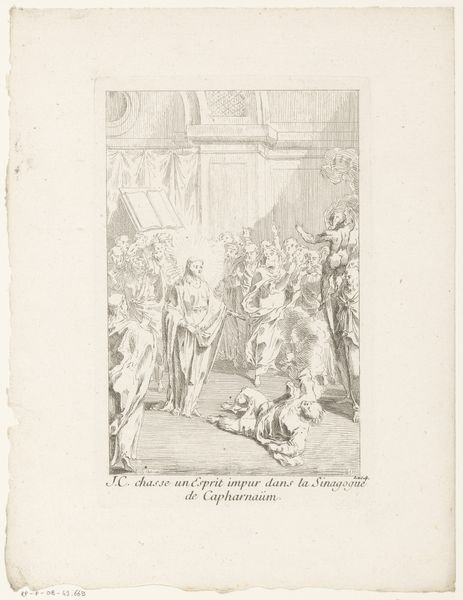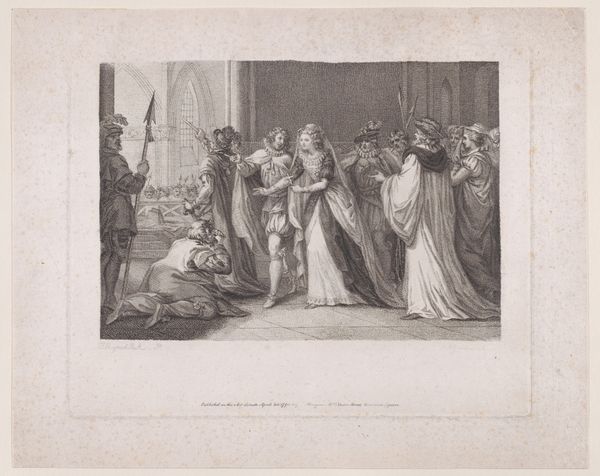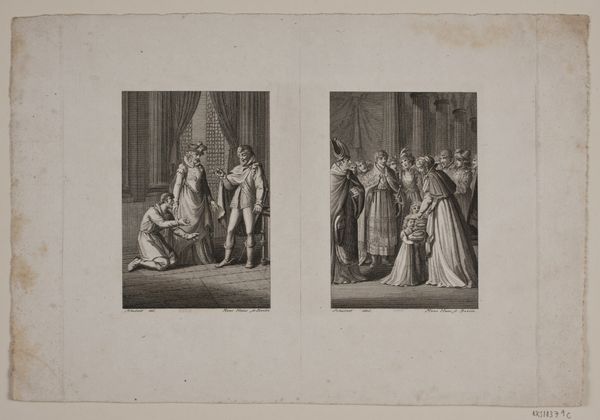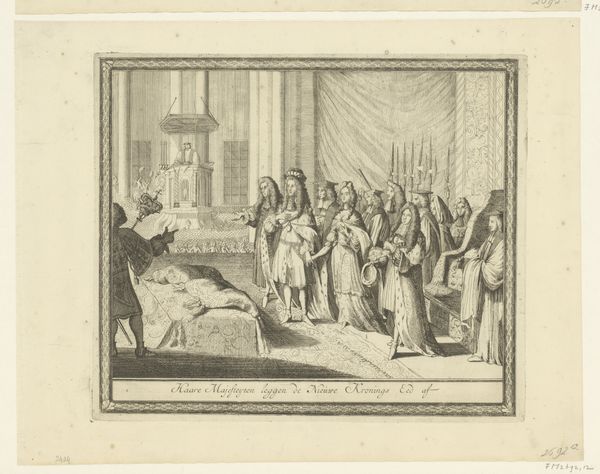
engraving
#
portrait
#
baroque
#
figuration
#
line
#
genre-painting
#
history-painting
#
engraving
Dimensions: height 339 mm, width 426 mm
Copyright: Rijks Museum: Open Domain
Curator: This engraving is titled "Catechisatie in de kerk" and is attributed to Pierre Etienne Moitte, created sometime between 1732 and 1780. What's your initial take? Editor: Well, immediately, I’m struck by the stark contrast! Look at the crisp lines rendered by the engraving, all those tightly packed bodies, and how the vastness of the architectural space almost threatens to overwhelm the figures within it. You really get a sense of texture despite it being monochrome. Curator: Absolutely. It's fascinating how this scene evokes echoes of grand historical paintings, yet focuses on a common, intimate event, a religious lesson or preparation for communion perhaps. See the way light pours down, almost a divine spotlight? The positioning seems very deliberate. Editor: The act of reproducing scenes for wider distribution raises fascinating questions, though. Engravings such as this could allow people to access religious or cultural information they otherwise wouldn’t be exposed to, acting like an accessible tool for information during that era. But then there's also that layer of authority encoded through its careful crafting by an elite artist… Curator: Precisely! The choice of engraving is also telling. It carries its own symbolic weight. An image replicated would suggest both authenticity and accessibility; a memory both public and personal at once. Think about the symbolic power of those supporting architectural structures, and the knowledge of all involved. The cultural weight of faith. Editor: Yet those precise lines, they still seem almost…sterile. A controlled dissemination, I think, mirroring the controlled social environment the Catechism aimed to instill. One has to admire Moitte’s engraving and printing ability but there’s a didactic undertone. The social contract on view here comes off very strong. Curator: I see your point. There's a controlled aesthetic. What remains with me, ultimately, is that interplay of tradition and dissemination, a private event displayed as a means to understand collective cultural identity, a visual signifier through skilled use of symbolic rendering. Editor: For me, I can’t help but dwell on the process itself – the time, skill, and sheer labour that went into meticulously crafting that plate and producing each print and its consumption within a set group dynamic. You definitely don't gain a proper understanding without factoring in its production method and the many intentions this inherently displays.
Comments
No comments
Be the first to comment and join the conversation on the ultimate creative platform.
